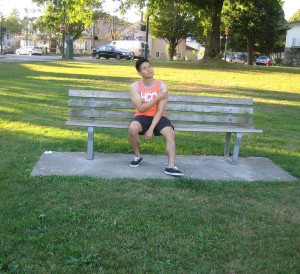Tendonitis is a condition that happens when one of the tendons that connect the muscles to the bones that function in supporting them becomes inflamed. Remember that the shoulder is susceptible to this condition. If an individual is suspected with this condition, a doctor should be consulted.
The shoulder joint is a complex joint that is supported by muscles and tendons to keep it steady. An outside trauma, daily stretch and strain makes the shoulder susceptible to many problems. People who are at the age of 40 are more susceptible to this condition which tends to weaken as the person gets older.
Causes of shoulder tendonitis
- A sudden and sharp movement, injuries during accidents or sports
- The normal wear and tear due to aging and some underlying conditions such as diabetes and rheumatoid arthritis.
Symptoms of shoulder tendonitis

- A dull aching pain can be felt in the shoulder that becomes worse during activity.
- There is tenderness and mild swelling
- Pain and stiffness when lifting the arms and the shoulder becomes painful when the arm is lowered after lifting
- Pain when lifting the arm overhead
- Burning pain can be felt from the front of the shoulder to the sides.
- There is weakness of the shoulder because of the pain
- There is difficulty in moving the arm behind the back while buttoning
- Not capable of playing sports that requires throwing
Treatment and home remedies
- Rest the shoulder; avoid doing strenuous activities in order to help heal the damaged tendon.
- Apply a cold compress since it helps minimize inflammation in the tendon, increase circulation and for faster healing. It must be applied for 20-30 minutes each for 2-4 hour when the injury is warm. Afterwards, hot compress should be applied alternately with ice compress since heat will relax the muscle tendon and help in restoring the range of motion.
- As cold and hot compress is applied alternately to the affected area, move and stretch the shoulder joint when possible in order to prevent frozen shoulder. This should be done slowly, but stop if there is pain.
- Natural substances such as arnica helps in minimizing pain and swelling, but avoid taking anti-inflammatory medications during the first 48-72 hours since it can cause bleeding.
- In order to protect and support the injured tendon, there is a need to wear a sling or tape the shoulder for relief of pain
- The individual should be encouraged to sleep in an upright position or with a pillow support
- Shoulder tendonitis takes several weeks to heal and during this time, it is important to stretch and adjust the healing scar by joint mobilization, massage, muscle stretches and assisted light exercises.
With the help of these measures, the symptoms of shoulder tendonitis can be managed to provide relief to the individual.
